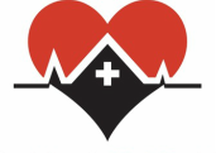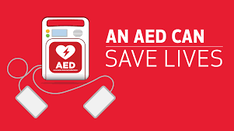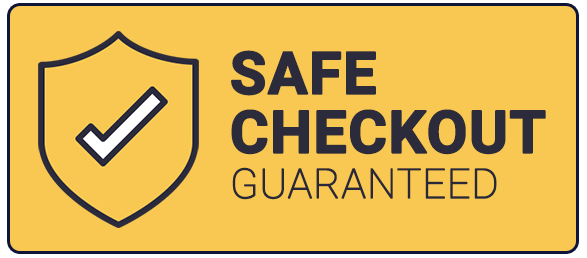INTERESTING FACTS ABOUT AED'SPerhaps you've taken a CPR class and know that an AED is an acronym that stands for Automatic External Defibrillator (AED). Regardless of what you know about AED's, here are a few additional things about AED's that may one day save your life. WHAT IS AN AED AND WHAT IS IT USED FOR? An AED is a portable, lightweight device that administers an electric shock to a person whose heart ventricles have stopped pumping blood to the rest of the body. AEDS are reliable and versatile and are designed to be used by anyone, regardless of experience. 5 IMPORTANT THINGS YOU SHOULD KNOW ABOUT AED’S 1. AEDs are not dangerous for a bystander rescuer or healthcare provider to use. As an AED sends a shock through a person to get the ventricles pumping again, many assume that this shock is powerful enough to be deadly. While the shock that an AED administers, may not be dangerous, it’s still important to make sure that everything and everyone is clear of the victim when the shock is given. 2. You are not at risk of being sued for using an AED on a victim. AEDs are extremely safe. There has yet to be any documented cases of a person being injured by an AED. If you have to use an AED on someone that you do not know, this means you are highly unlikely to cause any harm and no lawsuit will be coming your way. In addition, the Good Samaritan Laws here in Texas protect a responder who is acting in good faith trying to save someone. However, in the event of an emergency that requires the use of an AED, the one thing you should always look out for is a “Do Not Resuscitate” bracelet or necklace. 3. Using an AED is much more effective than just doing CPR without an AED. If you notice that a person's heart has stopped pumping and you are unsure whether to use an AED with CPR or to just use CPR, it is important to consider the rates of survival. When a first responder only used chest compression CPR, after 30 days the survival rate for victims is sadly only 7%. But, augmenting the CPR with AED shocks leads to a 40.7% survival rate one month later for victims. Subsequently, AED's do work. 4. Keep AED pads away from body piercings. Metals are conductors of electricity. If a victim in need of an AED shock has metal jewelry on his or her body nipple rings) in places where the AED pads need to go, do not put the AED pads over the metal rings. In most cases, care providers suggest moving the pads an inch away from the metal to perform AED treatment. In rare cases, removing the metal jewelry entirely to properly defibrillate may be necessary. 5. The adult AED pads may be used on children and infants. While AEDs are meant to return hearts to their normal beating patterns; in some situations, they can even restart a stopped heart. In these cases, AEDs are quite literally bringing people back to life. If you are on the fence about using an adult AED on a child, toddler, or infant, know that if you elect not to use it, that young person is still going to be dead. As experts recommend, strongly consider using an adult AED on child victims. There are directions to how to do defibrillate for children, infants, and toddlers on all AED kits. With the proper protocol, you will not harm the child, and you will likely be saving a life. CONSIDER TAKING AN AED AND CPR CLASS. Learning about AED's provides a solid foundation for everyone. However, the use of the AED should be regularly reviewed and practiced. Taking an AED, CPR, and First-Aid class led by a trained professional is the best the way to ensure that you’ll know exactly how to use an AED in the event of an emergency.
To learn how to use an AED and administer emergency care to an individual in cardiac arrest, there are several options available. Help-A- Heart CPR offers CPR, AED, and First Aid classes, which cover protocol for basic emergency-response treatments. If you are familiar with the CPR and first aid, you may want to consider taking a Basic Life Support (BLS) class, where you’ll learn advanced emergency response techniques in these areas as well as AED operation.
Comments
|
AuthorDr. Tracy A. Jones is the CEO of Help-A-Heart CPR, LLC and an American Heart Association, ASHI, and American Red Cross Master Program Trainer, Instructor, & AHA Faculty Member located in San Antonio, Texas. Archives
June 2024
Categories |
Help-A-Heart CPR, LLC | 1747 Citadell Plaza Suite 101 | San Antonio, Texas 78209 | (210) 380-5344 | [email protected]
Copyright © Help-A-Heart CPR, LLC 2024
100% Certification Acceptance
We promise your employer, school, or agency will accept the certification card we issue to you. If there is a question of acceptance or validity, simply send us an email at [email protected] with full details. We will reach out to the individual/entity and provide accreditation information. If still there’s a question, we will provide you with a full refund of your class fee. It’s that simple.
We promise your employer, school, or agency will accept the certification card we issue to you. If there is a question of acceptance or validity, simply send us an email at [email protected] with full details. We will reach out to the individual/entity and provide accreditation information. If still there’s a question, we will provide you with a full refund of your class fee. It’s that simple.
|
Communities Served
ALABAMA: Birmingham
ARKANSAS: Fayetteville, Hot Springs, Jonesboro, Little Rock NEW MEXICO: Albuquerque TENNESSEE: Knoxville TEXAS: Amarillo, Arlington, Austin, Bandera, Bastrop, Boerne, Brownsville, Comfort, Converse, Corpus Christi, Dallas/Ft. Worth, Del Rio, Dripping Springs, El Paso, Floresville, Fredericksburg, Georgetown, Harlingen, Houston, Junction, Katy, Kerrville, Kingsville, Kingwood, Laredo, Lubbock, Lufkin, McAllen, Midland, New Braunfels, Odessa, Pleasanton, Round Rock, San Angelo, San Marcos, Schertz, Seguin, Taylor, Temple, Texarkana, Tyler, Universal City, Victoria, Waco, The Woodlands |
Why Choose Help-A-Heart CPR?
1. Flexible Scheduling
2. On and Off Location Training Available 3. Casual, Fun Atmosphere 4. Best Price Guarantee 5. All Instructors are AHA and/or ARC certified 6. 5 Star Google Reviews 7. Blended Learning (Online & Skills Check) Available 8. Meets OSHA & College CPR Requirements 9. Get Certified Within 3-4 Hours 10.Certification Is Good For Two Years 11. Official AHA/ARC/ASHI Training Site 12. High Quality Safety Training! |








